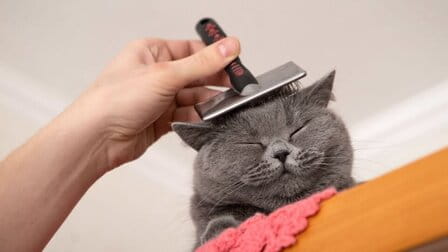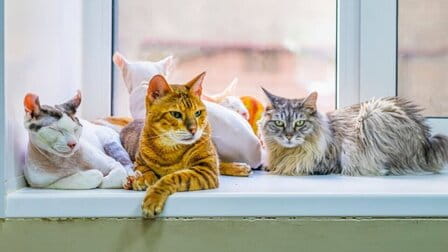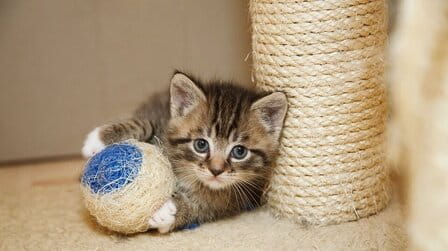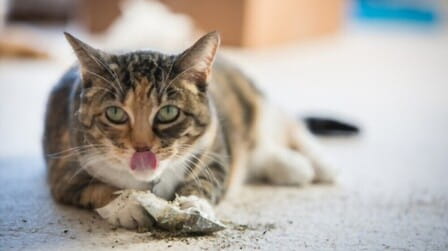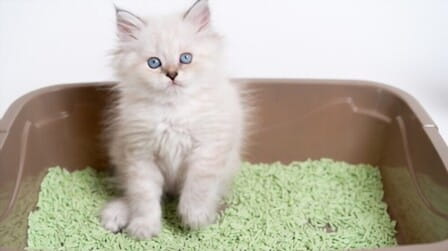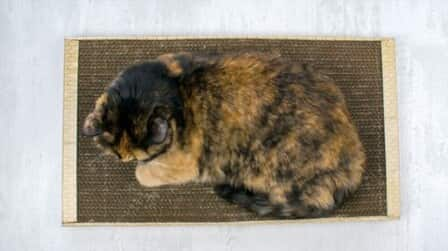Adopting a pet equals feeding, playing, and training. The ideal time to train your pet is when it arrives home. It is the point you create good habits for your cat. If improper training is applied, your kitten may have bad habits like pooping around the house instead of outside or in the litter box. In upcoming sections, let's discuss the two questions Why and How. Why does your cat poop in the house, and how to train them to poop outside?
1. Why does your cat poop in the wrong place?

There are many reasons why a cat poops around the house. It may be having medical issues, stress, or behavioral instincts. The nasty habit of your cat can come from:
- Health issues: Your cat may have diarrhea or constipation. These diseases cause the sudden need to go, but your cat has yet to reach the litter box or outside. Dementia is another potential case if you witness inappropriate behavior. Dementia usually occurs in older cats. Dementia is so dangerous that it can make your cat forget years of training.
- Stress: it happens when there is a change in your house. It can be rearranging the furniture, having someone new to move in, or the kitten just arriving at its new home. All changes can accidentally create stress in cats, especially the small ones.
- Behavioral instincts: the nasty habit appears a lot in male cats due to their need to make territory marks. Though urine marking is more common, some cats poop.
Other reasons can come from the litter box or habits established from its childhood. Whatever the reasons behind the action, observing is the first thing to do. Solutions must direct to the right problem. Hence, if your cat has this nasty thing, try to identify the cause.
2. How to train my cat to poop outside?
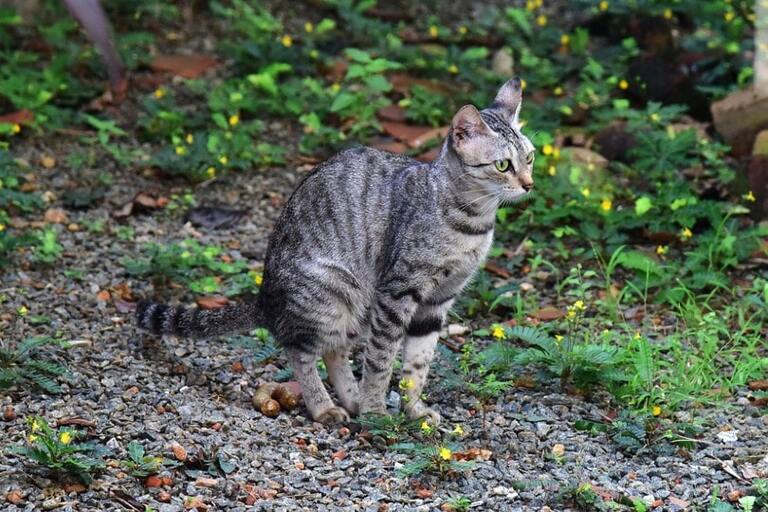
Training cats to poop outside takes a process. In any way, cats are animals. They will not be capable of learning something so fast. They are like babies, which means you first need to be patient in this training. Here is your guide to follow.
Train your cat how to go in the litter box

It is best to train your cat to poop in the litter box. It allows the cat to bury its evidence. This training should be conducted when the kitty arrives at its new home. When training it with the litter box, place it next to its bowl or cage. Then, you put it in the box after nap time.
Training goes with reward. Whenever you find your kitty using the box, a treat or petting is advisable. Do not scold or punish your cat for not getting used to the box at first. These actions will lead to stress and negative emotions for your pet. As we said, they are like babies who need our patience.
You should observe thoroughly to see if the cat likes its sandbox. The problem can be the box is too exposing or closed. Colors and shapes should be considered as well. One more important factor is litter. Organic litter is recommendable for kittens, in case they eat the sand. This occurs a lot in cats. When digesting litter, if not organic, your cat can face certain health risks.
Relocate the litter box

The next step in the process of training your cat to poop outside is relocating its sandbox. This should be applied when your kitty has been used to going in the litter box. To ensure your baby cat can adapt the activities to poop outside, move the box slowly near your door.
The suitable time for one movement is two or three days. In each movement, just move the box a little closer to the door, letting your cat identify well where it should go in. In the meantime, make sure you play with the cat and create no stress in the surrounding environment. Cats are sensitive to changes, and kittens are easy to face stress.
Install a cat door

As you move the litter box closer to the door, it's time to install a pet door for your cat. This door will allow it to go outside and play. Your pet should also have time to get used to the pet door. However, this will not take you too long. At this point, carefully watch the cat.
Move the litter outside the door

It nearly reaches the end of the training process. After days of moving the box nearer to the main door, it's time to move it outside. Your pet door should be available before this step. As your cat does well with the litter box, and now that it has its door, you will not have to be so worried about it pooping in the wrong place.
There can be behavioral instincts occurring occasionally, but it won't be a big issue. After a few weeks of letting your cat go in the litter box outside, we will come to the fifth step in this training guide.
Dump the sand

You will no longer need the litter box at this point. However, at the beginning of the fifth step, you should also ensure the distance between your door and the litter box. Keep it progressively a yard from the door to make sure your cat is used to its outside toilet. Patience is the key throughout the whole training. Keep the box further one or two miles every day.
Before getting rid of the litter box, dig a hole at the appropriate distance from your door, then dump the sand into it. Your cat would see the spot, and repeat its habitat training. Your cat will gradually get used to its spot there. Finally, you won't need the sand there anymore.
3. Notes
Your cat will need time and space to get along with this new habit. You should check the location whether it is warm, dry, and away from the noise. It should be private enough so that your cat can feel safe. You should also check if your neighbor is annoyed by this.
Checking the weather constantly is listed too. Weather is why you should also place a litter box indoors. It is for rainy or cold days. Your cat should always have a choice. It is helpful when your cat gets old, or worse faces the health risks as we have aforementioned.
Keep in mind that you must be patient during the training process. Treats and other rewards are encouraged. Creating a playful and comfortable living environment is a must for every pet parent.
Conclusion
Training a kitty is hard work that requires time and effort. It is not like a day or two. When training your cat to poop outside, you need to be patient and watch the kitty carefully. The first period involves a lot in its living environment, treats, and litter box. Older cats that have been used to the litter boxes will be a little faster to train. We hope this article is useful to you and your training.

